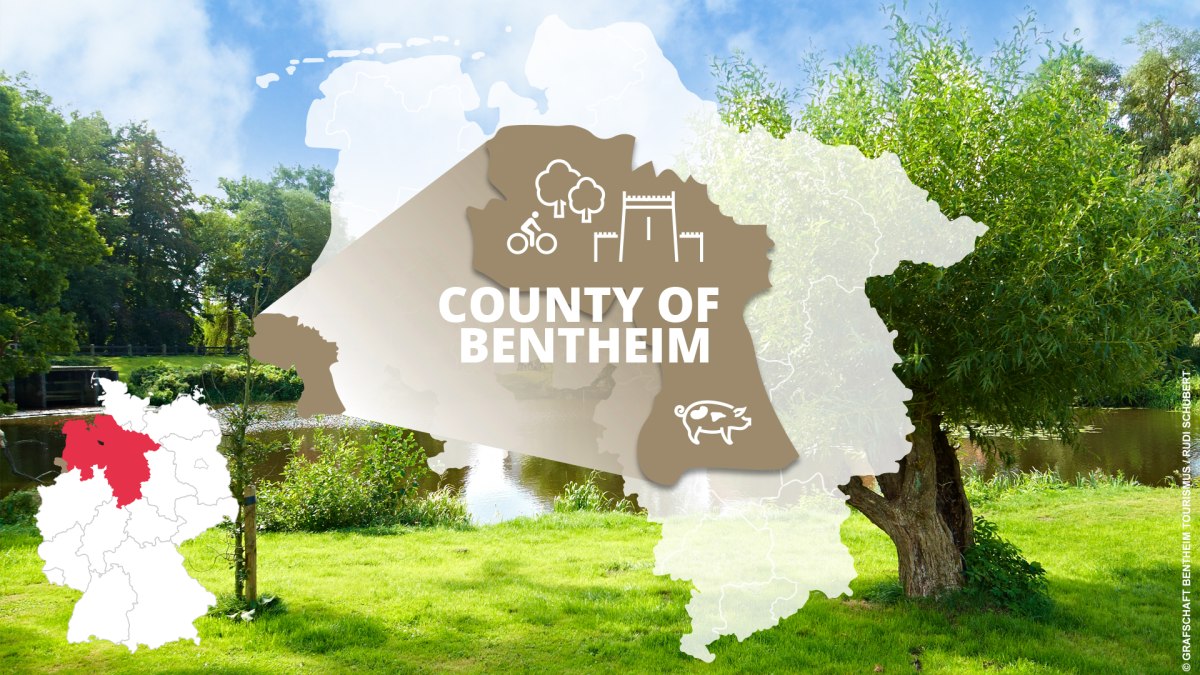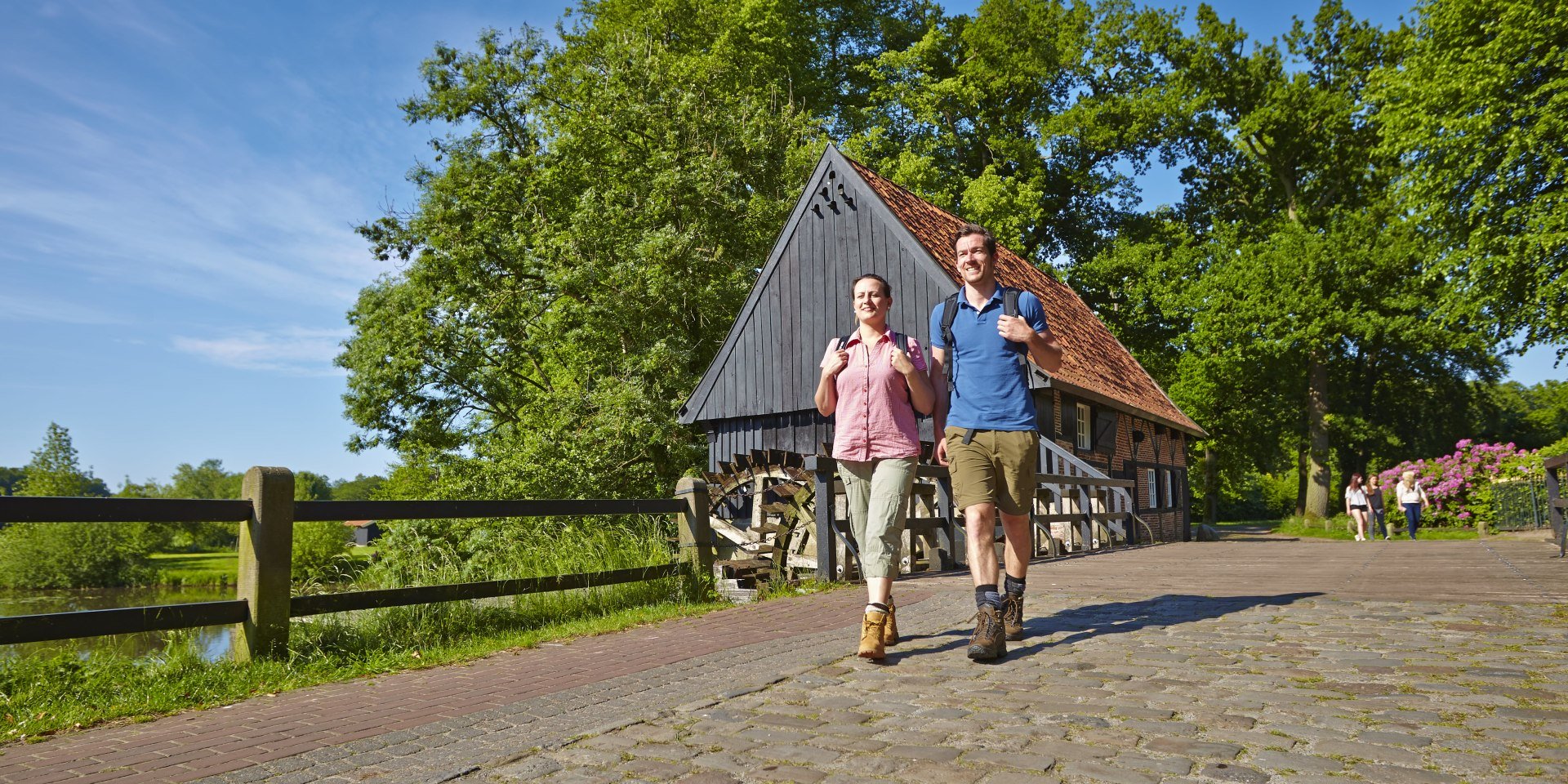The County of Bentheim is situated in the west of Niedersachsen (Lower Saxony), and lies on the border with the Netherlands. Sweeping heath and moorland dominate the landscape in the north of the county, whereas the south is known for its gently rolling hills. Bentheim Castle stands at 90 metres above sea level. It is one of the largest and most northern hill castles in north-west Germany.
The largest town in the County of Bentheim is Nordhorn. With its 50,000 residents, the town is one of the most bicycle-friendly places in Germany, and, in fact, the most bicycle-friendly spot in Niedersachsen.
Visitors can tour the region on two wheels on the roughly 1,200 kilometres of developed bike trails or with two feet on 320 kilometres of signposted walking routes. Alternatively, visitors can go on a horse ride and relax as they travel from place to place.
Explore the water town of Nordhorn by boat in the summer months or enjoy buckwheat pancakes – one of the region’s delicacies – after a casual stroll through the city centre.
There is also plenty for nature and art lovers to do in the County of Bentheim as the region boasts diverse art and cultural offerings. For instance, visitors can marvel at the open-air art exhibition, which is perfect for touring by bike. Not to mention the many other museums, churches, theatres and mills the county has to offer.



